Fantasy Books
Book review: Old Soul by Susan Barker
 Book links: Amazon, Goodreads
Book links: Amazon, GoodreadsABOUT THE AUTHOR: SUSAN BARKER is the author of four books. Her third novel, The Incarnations, was a New York Times Editors’ Choice and Notable Book, a Kirkus Reviews’ Top Ten Book of the Year and shortlisted for the Kirkus Prize for Fiction. An excerpt from her fourth novel, Old Soul, won a Northern Writers’ Award for Fiction in 2020. Susan currently lives in Manchester, where she is a Senior Lecturer in Creative Writing at Manchester Metropolitan University.
Publisher: G.P. Putnam's Sons (January 28, 2025) Length: 352 pages, Hardcover Formats: Audiobook, ebook, hardcover, paperback
Old Soul is darker, sharper, and far more sophisticated than typical horror. No cheap thrills here - just an unnerving sense of inevitability creeping in with every page. Readers willing to handle a slow burn, a literary structure, and nuanced characters will love it.
The novel opens with two grieving strangers - Jake and Mariko - meeting in an Osaka airport. They share drinks and talk just to discover they both lost someone they loved under similar, rather horrific, circumstances. Their loved ones died thousands of miles apart, but each had met the same enigmatic, dark-haired woman beforehand. Oh, and one more thing - their internal organs were reversed.
From there, Jake starts a globe-spanning journey. Obsessed with the case, he’s collecting testimonies from people who’ve lost someone to the woman. Each of them reads like a miniature horror story.
Meanwhile, the woman herself is out in the Badlands, luring her next victim and she needs to hurry up. Immortality isn’t as glamorous as folklore would have you believe, and rotting from the inside is no fun.
The alternating perspectives - Jake’s investigation and the glimpses into the woman’s present build a slow, creeping dread. To me, this narration feels elegant and eerie. The horror here is intelligent, and creeping, with moments of near-cosmic dread. Despite the book’s sophistication, it never feels pretentious. It’s gripping and visceral and never gets lost in its own literary ambitions.
A few words about the mysterious woman. She is, without question, evil. But not in a theatrical way - there’s no excess, no unnecessary cruelty. She does what is required to survive and moves across centuries and continents under countless names, always ready to trade lives for immortality. She abandoned family long ago. Human connection, belonging - these are irrelevant. All that matters is survival. This relentless, almost inhuman focus makes her alien, but also fascinating.
Some books sink their teeth into you slowly. Old Soul goes straight for the bone. This is literary horror in the best sense - dark, sophisticated, and unsettling in a way that lingers long after you turn the last page.
Monday Musings: Thoughts After Visiting My Kid
Last week, I flew out to Colorado to visit, Erin. Now, it goes without saying that I will leap at any chance to have time with my Peanut. I don’t need excuses to visit. But in this case, we had a bit of an agenda. Erin was in need of a car, and I went out to help her with the purchase.
Yes, she is 25 years old and could have done all of it on her own. But here’s the thing. Statistics show that women, on average, pay more for cars — new and used — than do men. In fact, White men pay the least of all. Women and all people of color will, on average, pay more for the same car, in the same regions, and even at the same dealerships. This is not an imagined form of discrimination. This is real and documented and supported by data.
So, out to Denver I went. We found her a car at a decent price. She’s happy, and I had time with my darling girl.
 Erin in her new car!
Erin in her new car!
But . . .
The other night, I finally saw On The Basis of Sex, the Ruth Bader Ginsberg biopic that came out in 2018. The movie is, of course, a Hollywood take on an extraordinary historical figure, and so is bound to suffer from some flaws. But it offers an unstinting look at the barriers placed before RBG, who was always the smartest person in whatever room she entered, and always the best lawyer in any courtroom she graced. In this way, it reminded me of 42, the Jackie Robinson biopic starring the late Chadwick Boseman, and Hidden Figures, which told the stories of Katherine Johnson, Dorothy Vaughn, and Mary Jackson, Black NASA mathematicians whose revolutionary work helped make possible the American space program.
In all of these movies (and countless other similar films that I have failed to mention) we are reminded of the irrefutable truth that sexism and racism (as well as homophobia, religious bigotry, and discrimination against people with disabilities) create nearly insurmountable barriers to success for too many.
And this is the insidiousness of the current Administration’s hysterical and irrational assault on DEI programs across the country. The assumption underlying this “policy” is that white, cis, straight males are the standard that define what it means to be qualified and competent. This is, of course, utterly ridiculous, and to see how foolish it is, take a moment to read any online biography of General Charles Q. Brown, the former Chairman of the Joint Chiefs of Staff fired by the present occupant of the White House for no other reason than because he happens to be Black. For that matter, take a moment to read a biography of Admiral Linda Fagan, the first female commandant of the Coast Guard, or Admiral Lisa Franchetti, the first woman to serve as Chief of Naval Operations and thus the first female member of the Joint Chiefs. Both were fired, apparently, because they’re woman and, like Brown, were seen by the Administration as “DEI hires.”
As if the Administration itself isn’t filled with (and led by) hires that are based entirely on race and gender! Does anyone honestly think that Pete Hegseth would be Secretary of ANYTHING if he weren’t a straight White guy? Does anyone think that Donald Trump would be anything more than a two-bit grifter if he hadn’t been born White, male, and rich-as-fuck?
When I was in graduate school, my (white male) advisor told me the story of how he came to be hired as a history professor at Stanford. He happened to be in the office of his (white male) advisor when the (white male) chair of the history department at Stanford phoned the aforementioned advisor, who was an old pal from Yale. The history department chairman said, “We have an opening here for an American history professor. Do you have any grad students who are on the verge of finishing their dissertations?”
“Actually, I have one sitting right here, and he’d be perfect.” At that point, my advisor’s advisor turned the conversation over to my future advisor who was “interviewed” and hired on the spot.
They call it an Old Boys Network for a reason, and such advancement has long been available to White men across academia, as well as throughout the business world, the legal and medical professions, politics, and in pretty much every other professional realm imaginable. Was my advisor qualified for the job? Absolutely. Was he more qualified than anyone else — of any race, gender, or group — who might have sought the job at Stanford had it been advertised and thrown open to all properly credentialed applicants? Who knows?
DEI is not intended to give an unfair advantage to underrepresented groups. Rather it is intended as a corrective for a culture, society, and economic system that have been tilted in favor of White men literally for centuries.
And yes, I count myself among those who have benefited from that uneven playing field. Absolutely I do! I was born White, male, upper-middle class. I’m straight. I was given every opportunity to succeed — I grew up in a nice house, in a good school system, raised by parents who fed me well, kept me safe, and took an active role in my education. I was taught from an early age that being smart, and being perceived as smart, are good things. I never faced any social pressure to hide my intelligence in order to be deemed “more attractive,” as so many girls my age were. I never feared the police. I never was called by the “N” word, as my best friend was, in my presence, when we were twelve. When the time came, I was in an economic position that allowed me to attend an Ivy League university. What an advantage all of that was! My privilege set me up for success. I know this. And I deal with it the only way I know how: by being an ally to those who didn’t have my privilege, and by fighting (and voting) for social justice and economic equality at every opportunity. Yes, I’m Woke. You’re damn right I am.
The current Administration is attempting to reverse more than half a century of progress on women’s rights, Civil Rights, LGBTQ+ rights, and antipoverty efforts. Why? Because they see anything that further levels the playing field as being to their personal disadvantage. Many of their supporters feel the same way. They would rather perpetuate a system filled with bias, one that rewards mediocrity by limiting competition from qualified women, qualified people of color, qualified people with disabilities, qualified people who identify as queer. They are terrified by the surety that if forced to compete with a wider group of skilled, talented people, they are likely to lose out. And they’re probably right. But that doesn’t change the fact that they are pursuing an ideological agenda that is immoral, cruel, and bad for our country.
Wishing you a good week.
Spotlight on “A Palace Near the Wind” by Ai Jiang
“A Palace Near the Wind” by Ai Jiang is richly inventive, brutal and beautiful science-fantasy.…
The post Spotlight on “A Palace Near the Wind” by Ai Jiang appeared first on LitStack.
’24? in 42′ with…Bob Byrne????
Jason Waltz kicked off season two of his 24? in 42 podcast interviews with your very own Monday morning columnist. The prior installment was with Malazan’s Ian C. Esslemont, so I’m in pretty good company here.
It should not surprise you that I was all over the place, covering Robert E. Howard, Michael Moorcock, Columbo, books on writing and screenwriting, Encyclopedia Brown, the Civil War, Tolkien, The Constitutional Convention of 1787, Lawrence Block, Steven Hockensmith, Norbert Davis, and much more.
Jason sends sixteen questions ahead of time, and mixes in eight ‘new’ ones that can be definite curveballs. He started things off with a knuckleball! (Last week’s post was on baseball- I’m still in the mood)
Here are two sample questions:
Who is the visual artist(s) that creates the artwork that most moves you?Michael Whelan and Walter Velez (those terrific early Thieves World cover novels) are two of my favorite fantasy artists. Being a mystery guy, I LOVE some color paintings that Robert Fawcett did. Arthur Conan Doyle’s son Adrian (who waas a freeloading ass), co-wrote some Holmes stories. They’re not bad. All but the first appeared in Colliers’ illustrated by Fawcett. They are wonderful illustrations. Up there with the two great Holmes artists: Frederic Dorr Steele, and Sidney Paget. I find they capture Holmes.
How do you give depth to a character? Do you treat primary, secondary, and tertiary characters any differently?I consciously try to catch myself using a secondary or tertiary character as an info dump. Even a small one (and I absolutely do that). If the only reason I find them around is to give some info, I rework them. Or, try to use someone already in the story. There’s no depth to an info dump character.
The depth of a half dozen characters in the first Max Latin story (Watch Me Kill You) is about as well done as any story I’ve read. I try to give some personality, without making it a cliché.
Jason and I had a lot of fun, and you can actually see the enthusiasm that I bring to my blogging here at Black Gate. Settle in and watch (or at least listen) to me wax/ramble on. The 42 (from Douglas Adams’ Hitchhiker’s Guide) is the time target. Since I went over by about 35 minutes, I expanded on things a bit…
(42 is also Jackie Robinson’s number, and I talked about him for one question).
And for the record, since Jason called me out on camera: Ohio State defeated Texas in the CFP that night. In quite dramatic fashion, no less.
Click on over. I’m told I was a bit animated!

Bob Byrne’s ‘A (Black) Gat in the Hand’ made its Black Gate debut in 2018 and has returned every summer since.
His ‘The Public Life of Sherlock Holmes’ column ran every Monday morning at Black Gate from March, 2014 through March, 2017. And he irregularly posts on Rex Stout’s gargantuan detective in ‘Nero Wolfe’s Brownstone.’ He is a member of the Praed Street Irregulars, founded www.SolarPons.com (the only website dedicated to the ‘Sherlock Holmes of Praed Street’).
He organized Black Gate’s award-nominated ‘Discovering Robert E. Howard’ series, as well as the award-winning ‘Hither Came Conan’ series. Which is now part of THE Definitive guide to Conan. He also organized 2023’s ‘Talking Tolkien.’
He has contributed stories to The MX Book of New Sherlock Holmes Stories — Parts III, IV, V, VI, XXI, and XXXIII.
He has written introductions for Steeger Books, and appeared in several magazines, including Black Mask, Sherlock Holmes Mystery Magazine, The Strand Magazine, and Sherlock Magazine.
Book Review: The Gate of the Feral Gods by Matt Dinniman
I received a review copy from the publisher. This does not affect the contents of my review and all opinions are my own.
 The Gate of the Feral Gods by Matt Dinniman
The Gate of the Feral Gods by Matt Dinniman
Mogsy’s Rating: 5 of 5 stars
Genre: Fantasy, Science Fiction
Series: Book 4 of Dungeon Crawler Carl
Publisher: Ace (March 11, 2025)
Length: 608 pages
Author Information: Website
There’s LitRPG, and then there’s Dungeon Crawler Carl. In fact, Matt Dinniman may have forever ruined this genre for me, as I don’t think I’ll ever find a series as fun and amazing. The Gate of the Feral Gods is the fourth installment, but there’s no slowing down here. Instead, we’re charging full steam ahead, plunging deeper into the chaos!
The story picks right up from where things left off in The Dungeon Anarchist’s Cookbook, joining Carl and his larger-than-life feline companion, Princess Donut, as they descend deeper into the dungeon in their continued fight for survival. Now on the fifth floor, the rules shift dramatically, presenting an entirely new set of challenges. This level introduces a unique twist: all crawlers are separated into individual biome-themed “bubbles” which are scattered across four quadrants of the game world. Unfortunately for Carl and Donut, this means being cut off from their friends, and to make matters worse, they won’t be able to access the next floor until all the objectives in their bubble are met. As this is not something they can do on their own, success hinges upon finding new allies—and fast.
By now, we’re starting to see a pattern emerge, with each level introducing a distinct gaming mechanic. In many ways, the fifth floor mirrors an epic game of Capture the Flag, in which crawlers are randomly assigned to the different bubbles, such as air, water, land, and deep ocean. Each biome also features their own set of dangers, mobs, and goals. The only way to break free is to destroy the castles in their respective bubbles, which would then allow crawlers to assist others in doing the same. But of course, Carl, Donut, and their new party member Katia have landed in one of the toughest bubbles, where the challenges are more difficult and the odds against them are stacked higher than ever. Still, as we all know, it will take much more than that to break their spirit.
The Gate of the Feral Gods was yet another fantastic sequel, and I just love cracking open each book to discover what awesome adventure awaits us next. What makes these books so addictive and so entertaining is the way each volume builds upon the ones that came before, driving up the excitement while still maintaining the humor, heart, and thrilling action. These books are laugh-out-loud funny, and I’m always surprised at Carl’s ingenious solutions to seemingly impossible situations. I’m also floored by the sheer creativity in everything from small-scale puzzles in the dungeon to the overarching intrigue of who or what in the great wide universe is actually in control of the crawl.
It’s honestly impressive how Dinniman can manage to juggle so many moving pieces of the storyline all at once. You’ve got multiple character arcs unfolding simultaneously, all their interconnected plotlines, a dungeon and its AI that are constantly shifting in new and unexpected ways, various RPG mechanics that are expanding as the characters get stronger, plus an intergalactic political drama playing out in the background to boot! Whew! With so much happening at once, one thing for sure is that you’ll never be bored, and what’s more, each storyline is given the time and attention it deserves. True, sometimes things can feel a little overwhelming, but so far, the author seems quite diligent in resolving story threads so that readers aren’t left hanging.
But truly, what sets Dungeon Crawler Carl apart is its character development. Yes, we get new quest lines, new boss fights, and plenty of the crazy-ass dungeon-crawling mayhem that can only come from the mind of Matt Dinniman, but we also get to see Carl and Donut’s relationships evolve—both with each other and with the ever-expanding cast of allies and adversaries. In some ways, this series has the feel of a favorite soap opera, where I just can’t wait to dive back in to catch up with all the characters.
That said, things get pretty bleak for some of them. It’s a sad fact that none of the side characters are truly safe, and even Carl and Donut get put through the wringer, as they adapt to increasingly cruel and brutal challenges. Our protagonist has repeatedly sworn that the dungeon will not break him, but with each new level, the physical and psychological toll on him only seems to get worse. Still, whenever circumstances start to look dire, there’s always much needed levity to pull us out—often thanks to Donut and her impeccable talent for saying the most absurd things at the most inopportune times.
When all is said and done, I think The Gate of the Feral Gods might be my favorite book of the series so far, delivering on every front and exceeding expectations in every way. This book has everything readers love about Dungeon Crawler Carl—pulse-pounding action, gut-busting humor, and surprisingly deep emotional moments—all wrapped up in an explosive plot that’s impossible to put down. It’s a must read for fans, obviously. And if you haven’t started this series yet, don’t wait! With the re-issuing of all the books, there’s no better time to jump in.
![]()
![]()
More on The BiblioSanctum:
Review of Dungeon Crawler Carl (Book 1)
Review of Carl’s Doomsday Scenario (Book 2)
Review of The Dungeon Anarchist’s Cookbook (Book 3)
New Adventures for the World’s Favorite Barbarian
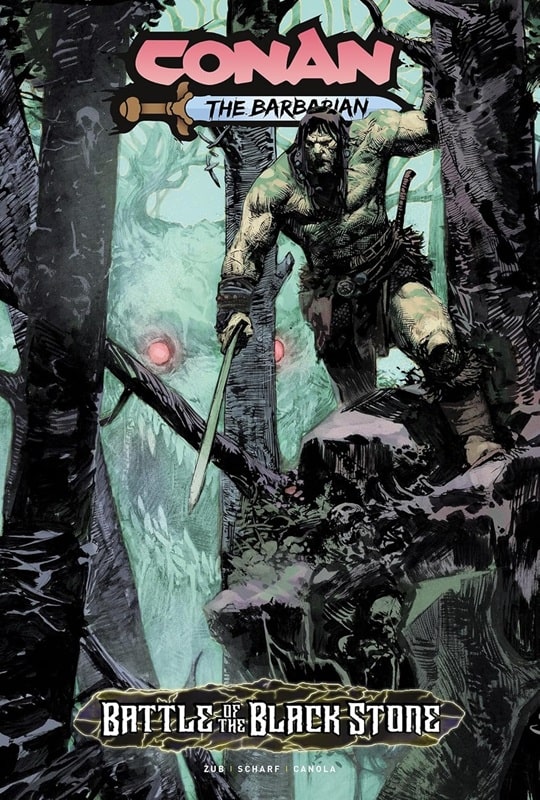 Conan the Barbarian: Battle of The Black Stone (Titan Comics collected edition, April 1, 2025). Cover by Jonas Scharf
Conan the Barbarian: Battle of The Black Stone (Titan Comics collected edition, April 1, 2025). Cover by Jonas Scharf
Few things are more ubiquitous than Conan and fantasy. Decades of sword-swinging high adventure has earned the barbarian a following most can only dream of. It’s taken the heavily thewed warrior to the big screen, Marvel Comics, and more. But it’s his latest adventure at Titan Comics that may prove to be the icing on the proverbial Shadizarian cake.
“This isn’t my first time writing Conan, but it’s definitely the most expansive opportunity I’ve ever had to chart the direction of such an amazing iconic character. I could not be happier in terms of our team and the collaboration we have in terms of story, art, and worldbuilding,” Jim Zub, writer of Conan the Barbarian at Titan Comics, shared by email.
[Click the images for Conan-sized versions.]
Over the years, few have come to understand the Cimmerian like the acclaimed Canadian scribe. Even in a career that has taken him to the heights of the comic book industry, Zub’s Conan work is special. His bibliography reads like a tour of the barbarian’s finest adventures of the past 10 years: Marvel’s Conan the Barbarian, The Savage Sword of Conan, and the epic Battle of the Black Stone are a few highlights. No wonder he’s so trusted by the rights holders of Robert E. Howard’s work.
“I actually work directly for Heroic Signatures, the rights holders of Conan and the Robert E. Howard character library. Titan publishes the comics in English, and they’ve been great publishing partners, but on a creative level I answer directly to the people who know Conan best and that has made the creative process really vibrant,” Zub stated.
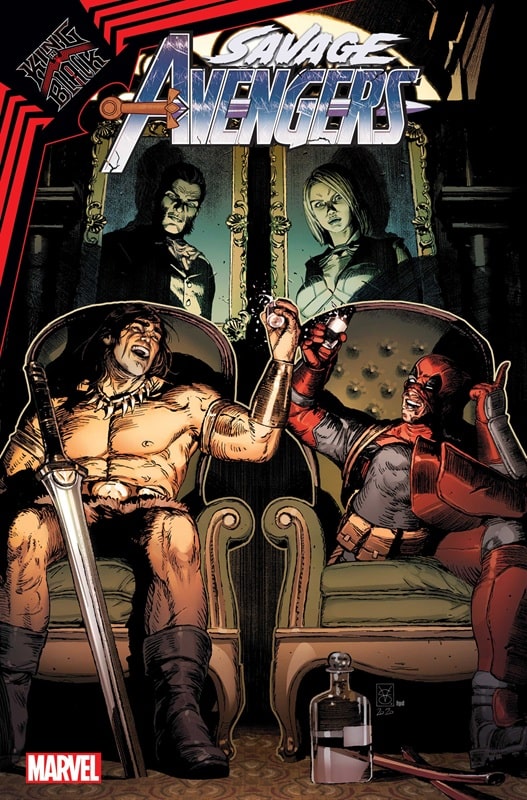 Conan and Deadpool in Savage Avengers #18, by Gerry Duggan and Kev Walker (Marvel Comics, February 17, 2021). Cover by Valerio Giangiordano
Conan and Deadpool in Savage Avengers #18, by Gerry Duggan and Kev Walker (Marvel Comics, February 17, 2021). Cover by Valerio Giangiordano
It wouldn’t be exactly fair to call Conan’s return to Titan a comeback. At Marvel, the Cimmerian had an impressive run in the much-loved Savage Avengers. Solo, he would be well-treated by Zub and his colleagues in stories like Conan: Serpent War and even fight symbiotes during the massive King in Black storyline. A look at the enthusiasm that has greeted Titan’s Conan series, however, tells you that this is something different.
Zub added, “Every time I get to contribute to characters and worlds I grew up with it’s a thrill, and this Conan publishing initiative is a whole new level.”
Such big breaks come with a heavy responsibility. After Howard created the character in the 1930s, many other writers would pen new tales for the Cimmerian. That lengthy list of scribes includes respected names like L. Sprague de Camp, Karl Edward Wagner, Roy Thomas, and Jason Aaron. How has he managed to stand out while writing a legacy character that has passed through so many legendary hands? Surprisingly, it’s by following the legends as closely as he can.
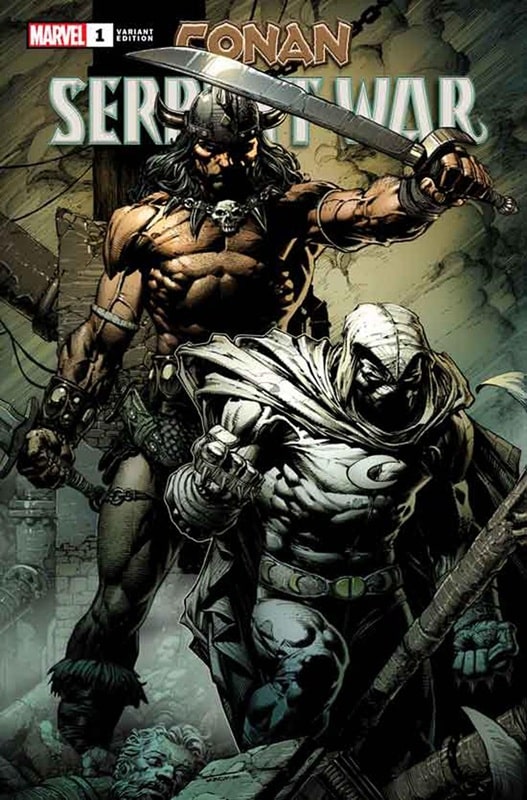 Conan: Serpent War #1, written by Jim Zub (Marvel Comics, December 4, 2019). Incentive variant cover E by David Finch
Conan: Serpent War #1, written by Jim Zub (Marvel Comics, December 4, 2019). Incentive variant cover E by David Finch
“If anything, I’m trying to hew as closely to Robert E. Howard’s original pulp characteristics as I can, while also incorporating the most iconic aspects of Roy Thomas’ seminal comic writing alongside the vision so many incredible artists like Frank Frazetta, Barry Windsor-Smith, John Buscema, Joe Jusko, Cary Nord and others have brought into it over the decades,” Zub explained.
Following in those footsteps brings with it plenty of challenges and opportunities. There aren’t many writers that understand that as well as Zub.
“The longer a character has been around, obviously, the more stories have been told and the harder it can be to surprise the existing fanbase while still staying true to who that character is. It’s a delicate balance where you want to keep core elements in mind but not close yourself off to new ideas,” Zub said. “The upside, of course, is the fact that legacy characters have that built-in recognition. I’m not building from scratch in terms of visibility and there’s an existing fanbase excited to see what comes next. The challenges and benefits are tightly wound together.”
You only need to read the massive Conan: Battle of the Black Stone limited series to see that approach in practice.
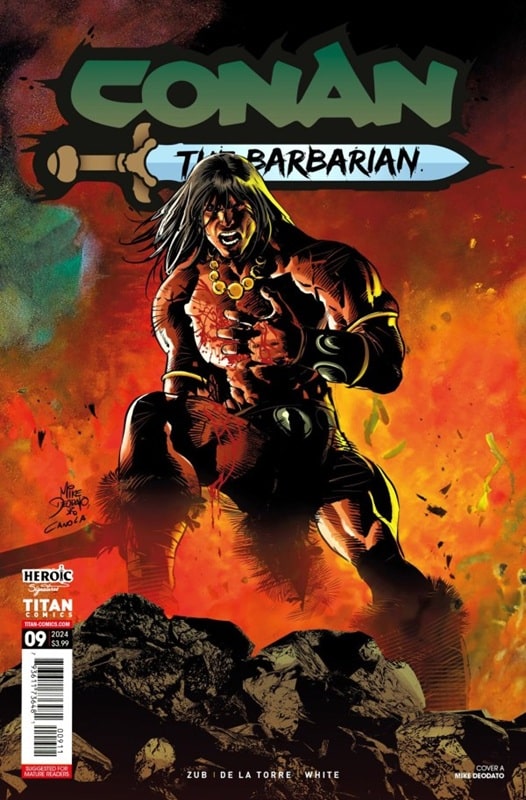 Conan the Barbarian #9, written by Jim Zub; art by Robert De La Torre and Dean White (Titan Comics, March 27, 2024)
A Walk With Titan
Conan the Barbarian #9, written by Jim Zub; art by Robert De La Torre and Dean White (Titan Comics, March 27, 2024)
A Walk With Titan
If one word could describe what it is like to read Titan Comics Conan the Barbarian, that word would be ‘fun.’ Not that it shortchanges readers on the artistic or deeper side of things. Far from it. The colors pop like a 70s comic, there’s no shortage of poetic allusions, well-crafted narrations, and action. But above all its bursting with creative energy, like a room of Conan’s most talented fans were allowed to cut loose.
“The new Titan series is a Mature Readers book, so we don’t have to hold back on violence or salacious elements where appropriate. That allows us to channel the intensity of the pulp source material even more closely,” is how Zub describes it.
Fans of high-fantasy and the barbarian’s sword-swinging antics will not be disappointed. Conan is at his most lethal in many of these stories, battling Picts and challenging sorcerers with his usual bravado. The ingredients of great sword and sorcery tales are all there: magic, romance, and plenty of mayhem.
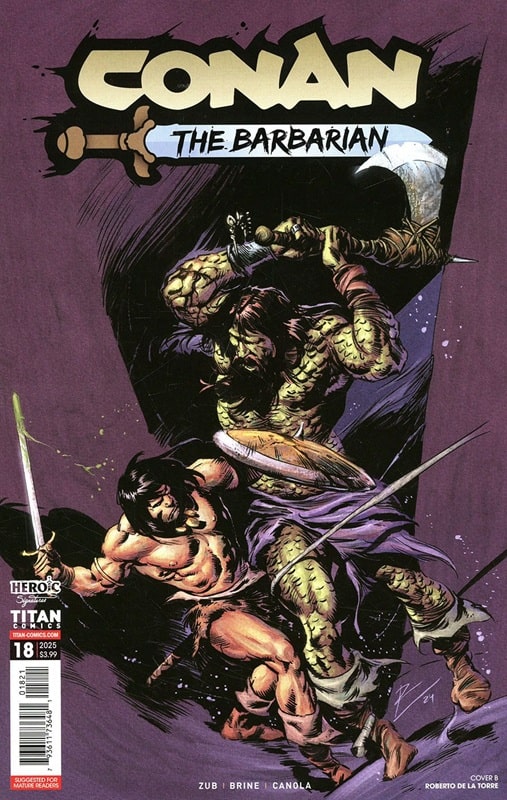 Conan the Barbarian #18, written by Jim Zub; art by Danica Brine and Joao Canola (Titan Comics, February 19, 2025). Cover B by De La Torre
Conan the Barbarian #18, written by Jim Zub; art by Danica Brine and Joao Canola (Titan Comics, February 19, 2025). Cover B by De La Torre
“It’s about distilling the best parts of past works and bringing them together with Howard’s own expansive mythmaking across the ages to tell epic stories of sword & sorcery. If I do my job well, it should feel “true” to old and new readers without falling back on adapting previous stories,” Zub said.
True to their epic vision, the creative team behind the series has not stopped at just celebrating the Hyborian Age. While the comics are full of respectful nods to the past, they also give Conan plenty of new obstacles to overcome. Other Howard characters are brought in and before you know it, a sprawling multi-timeline adventure is unfolding. Working on Conan, in general, has helped Zub level-up as a writer and his Titan Comics storylines feel like years of hard-work distilled for our reading pleasure.
“With each new storyline I’m pushing myself to use familiar pieces in unorthodox ways so that readers can see enough of the familiar to know that it’s still Conan, but knot know exactly which way the story is headed,” Zub said.
His evocative narrations have become integral to the experience. They set the tone, heighten the drama when necessary, and add some appreciated literary flair. It is no accident either that they read so quintessentially Conan.
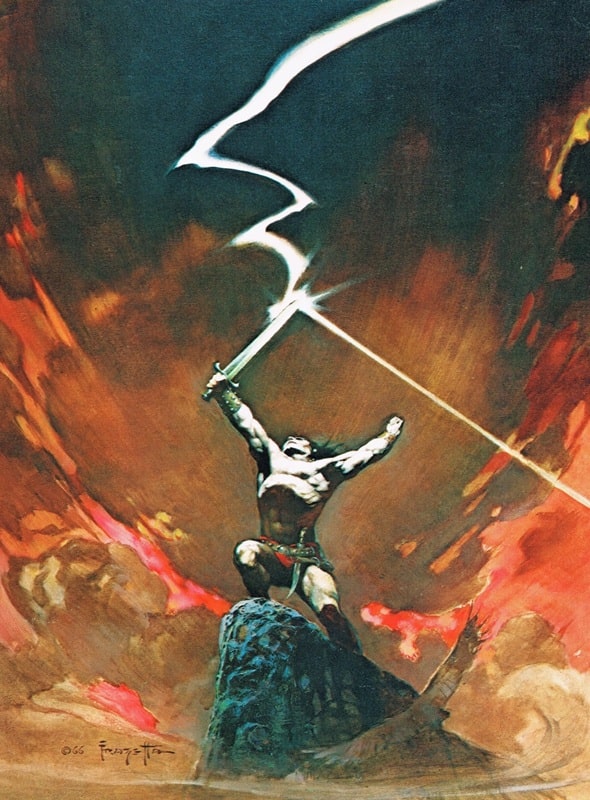 Classic barbarian art by Frank Frazetta: the cover to Thongor Against the Gods by Lin Carter (Paperback Library, November 1967)
Classic barbarian art by Frank Frazetta: the cover to Thongor Against the Gods by Lin Carter (Paperback Library, November 1967)
“I’ve marinated in the original Howard prose and analyzed it for cadence and vocabulary to make my narration feel like the classics without just copying it word-for-word. It’s made me think deeper about pacing, prose, characterization, geography, and culture,” Zub said.
The Battle for the Black Stone storyline has been a wild ride to say the least. While it’s impossible say where Conan is heading next, Zub’s work has left creatives of every level with plenty to learn from.
“There’s a reason why characters like Conan have stood the test of time and it’s crucial for people working on the property to understand and respect that bedrock foundation even while they bring their new ideas into the mix. Longtime fans can always tell if someone has done the research and cares about what they’re working on and, if you can win them over, it’s easier to build a strong audience from there,” Zub stated.
Ismail D. Soldan is an author, journalist, and poet. His work has previously appeared in Illustrated Worlds, LatineLit, and The Acentos Review among other publications. A proud explorer of both real and imagined worlds, his most recently published short story can be read in the January 2025 issue of Crimson Quill Quarterly, and his last article for Black Gate was An Eternal Champion’s Legacy.
The Leaning Pile of Books
The Leaning Pile of Books is a feature in which I highlight books I got over the last week that sound interesting—old or new, bought or received in the mail for review consideration. Since I hope you will find new books you’re interested in reading in these posts, I try to be as informative as possible. If I can find them, links to excerpts, author’s websites, and places where you can find more information on the book are included, along […]
The post The Leaning Pile of Books first appeared on Fantasy Cafe.Fan of the Cave Bear
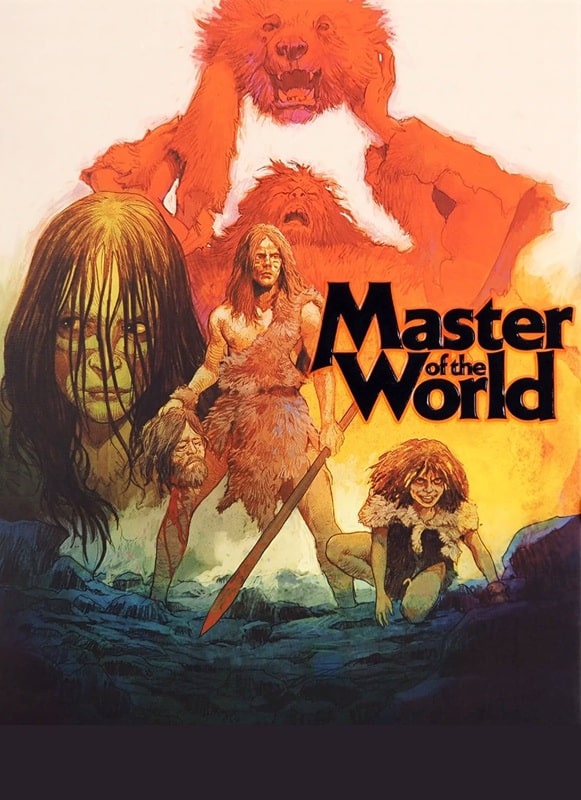 Master of the World (Falco Film, 1983)
Master of the World (Falco Film, 1983)
As usual, 20 films, all free to stream, and I’ve never seen them before. Can I really find 20 cave person films I can sit through?
EDIT: No. I’ve expanded the list to include any and all primitive cultures as there are not enough prehistoric flicks to watch.
EDIT: I’m capping this list at 10 – I can’t stomach any more f**king Italian cannibal flicks.
Master of the World (1983) TubiAgainst my better judgement, I’m starting a new list. The usual rules apply — 20 films, free to stream, based on a theme. This time, cave folk!
We kick off with this Italian offering from the early 80’s, obviously inspired by Quest for Fire and, um, possibly Caveman. It’s the old story of forbidden love, rival clans beating each other up and eating the brains of the vanquished, plus the invention of the bolas. It’s the Romeo and Juliet adaptation you never knew you needed.
The whole shebang is peppered with grainy stock footage of out-of-place animals and clouds, and there’s a man in a bear suit intercut with a real, heavily drugged bear, who beats the crap out of everyone. Actually, this semi-fake bear was a highlight.
As any nerd worth their salt will tell you, Ben Burtt used the sounds of a bear to create Chewbacca’s guttural growls. I swear to God, the filmmakers just took soundbites of Chewbacca from Star Wars and dubbed their own bear with them. Check it out — validate me!
Ultimately, a rather tedious affair, too much high-pitched grunting. I’m only one film in, and already regretting this.
3/10
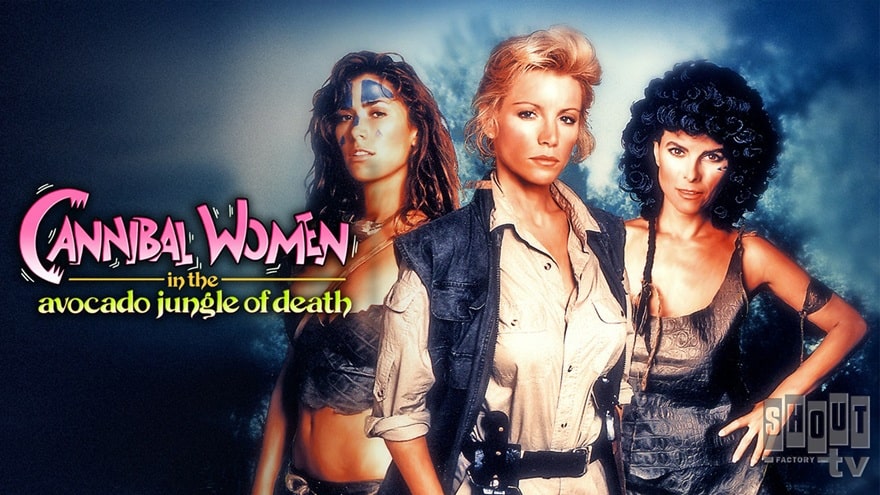 Cannibal Women in the Avocado Jungle of Death (Paramount Home Video, 1989)
Cannibal Women in the Avocado Jungle of Death (1989) Tubi
Cannibal Women in the Avocado Jungle of Death (Paramount Home Video, 1989)
Cannibal Women in the Avocado Jungle of Death (1989) Tubi
Confession: I could only find about a half dozen prehistoric cave people flicks (that I hadn’t seen or are free to stream), so I have expanded the parameters to include any ‘primitive’ cultures or groups. This opens up the doors for a wider selection, and a lot more rubbish. Case in point…
I thought I had seen this, but I was probably confusing it with Amazon Women on the Moon — anyhoo, this is a weird little affair, very cheaply made, and a bit of a mess. I’ve seen it described as a comedy horror, but there’s no horror in it, and very little in the way of good comedy. The script, written by director J.F. Lawton (who wrote Pretty Woman and Under Siege!) is really not as funny as he thinks it is, flip-flopping between absurdist schtick in the Airplane vein, to satirical monologues — all of which outstay their welcome very quickly.
Shannon Tweed is perfectly fine as the lead, but Adrienne Barbeau is wasted, and the least said about Bill Maher the better (although he does nail a couple of pratfalls). The film claims to be a commentary on feminism and toxic masculinity, but neither theme is realised due the reliance on tired tropes (the male gaze, the white male savior). Oh well.
4/10
 The Slime People (Donald J. Hansen Enterprises, 1963)
The Slime People (1963) Prime
The Slime People (Donald J. Hansen Enterprises, 1963)
The Slime People (1963) Prime
A primitive prehistoric race rises from the sewers to reclaim the planet after some misguided nuclear testing? Yes, this fits the criteria.
Is it any good though? Weeeellll…
It starts off pretty well. A lone pilot flies into a California airport, only to find the entire town deserted. It’s well set up, and would be even more effective if the film hadn’t shown us the titular monsters as soon as the film starts, before the credits. The monsters themselves are quite interesting, however it looks like they blew the budget on three full-size costumes; think Dr. Who‘s Zygons wearing gorilla pants.
The rest of the ensemble is made up of the usual suspects: lantern-jawed Clark Gable-lite, useless scientist, useless scientist’s useless daughters, useless marine (only there to say ‘gee whiz’ and kiss a useless daughter) and a nutcase who has ‘uncomfortable feelings’ for his goat. You read that right.
The whole affair is shrouded in fog (a major plot point) as mostly consists of lots of talking and running through the afore-mentioned fog. It’s a bit rubbish, but strangely compelling.
5/10
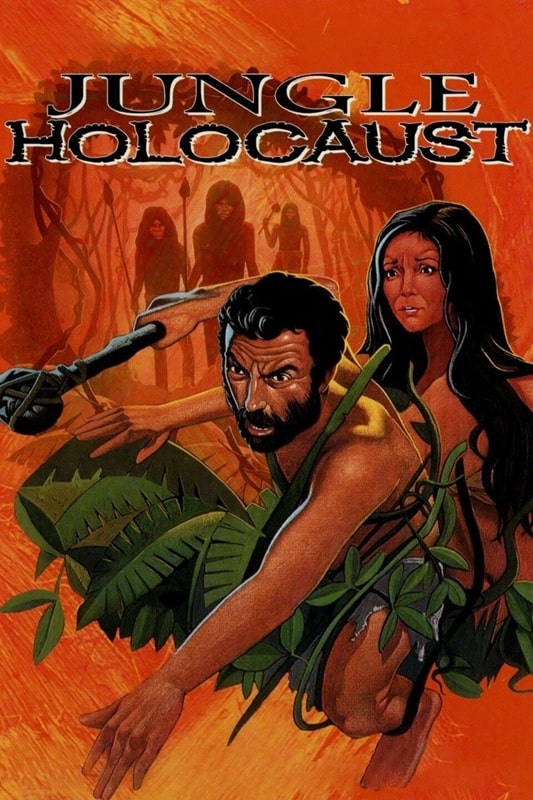 Jungle Holocaust (Erre Cinematografica, 1977)
Jungle Holocaust (1977) Tubi
Jungle Holocaust (Erre Cinematografica, 1977)
Jungle Holocaust (1977) Tubi
Of all the horror sub-genres, jungle cannibal ones are my least favourite. There’s simply no joy to be found in any of them, and combine them with the Italian predilection for animal cruelty, and you’ve got a film I never need to see twice. This one is the first foray into the genre by the much lauded Ruggero Deodato, and it’s not as ghastly as his later offerings, but still enough to leave me questioning my life choices. I can deal with the human-on-human buffets, but the suffering of real animals turns my stomach.
Anyhoo — it’s the usual plot; white Italians enter the jungle, get eaten. Along the way there is stock footage of animals eating each other, ants in wounds, copious willy tugging (some bad, some good) and lots of ‘oo, oo, oo’ ‘aah, aah, aah’.
The leads are pretty good, Massimo Foschi really sells the whole jungle madness look, and Me Me Lai is great as the loveliest cannibal of them all. However, at the end of the day I don’t mean to be judgemental, but I have no idea how anyone can watch these for a good time.
6/10
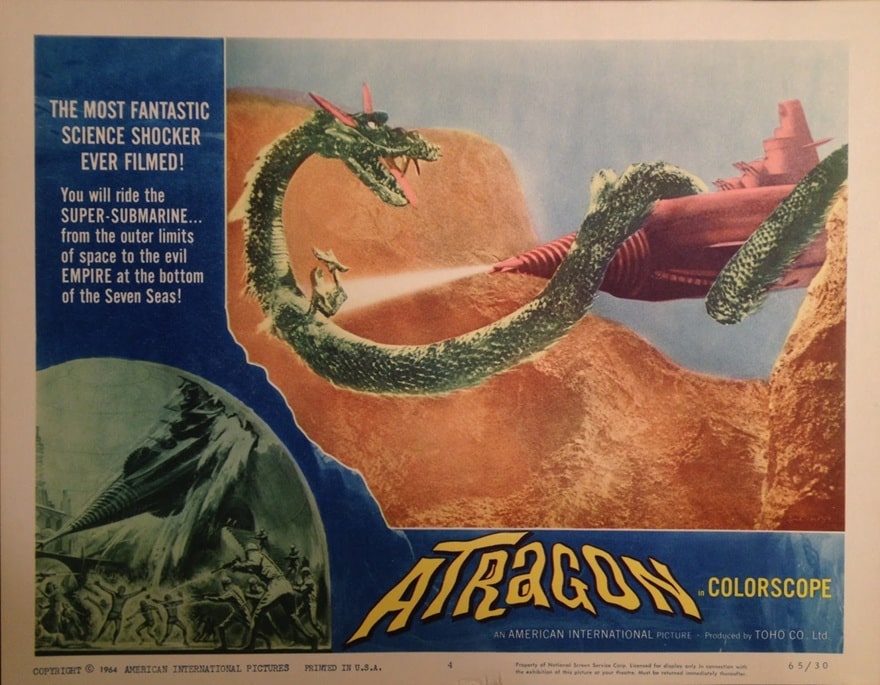 Atragon (Toho, December 22, 1963)
Atragon (1963) Prime
Atragon (Toho, December 22, 1963)
Atragon (1963) Prime
A tenuous fit for this project, Atragon features an ancient civilization (the Empire of Mu) hellbent on reclaiming their position as rulers of the world. For now, their continent lays at the bottom of the Pacific, so the film is all about Japan’s experimental submarine program, patriotism, and nefarious agents.
The entire world rallies via stock footage as the Mu Nemo themselves around the globe, sinking ships and being a general nuisance. Lots of lovely matte paintings and Thunderbirds-style models, and a bonus sea monster at the end. I had fun.
6/10
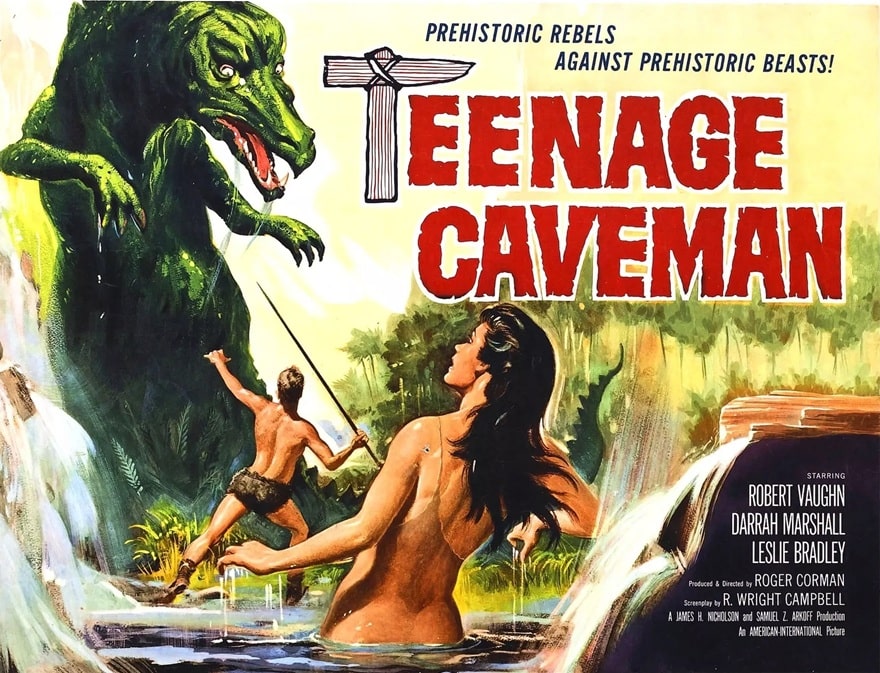 Teenage Caveman (American International Pictures, July 1, 1958)
Teenage Caveman (1958) Prime (AMC+)
Teenage Caveman (American International Pictures, July 1, 1958)
Teenage Caveman (1958) Prime (AMC+)
Yes, I started a free 30-day trial sub to AMC+ just so that I could watch this movie without the MST3K voice track. Such is my commitment to this pointless exercise in procrastination.
Anyhoo — here we have Roger Corman writing and banging out a caveman film in a couple of weeks. All shot on one California location, amply sprinkled with footage from other AIP flicks, featuring a very young Robert Vaughn as a young ‘cave person’ in the midst of an existential crisis. The clan he belongs to is the cleanest, whitest bunch of knuckle-draggers you’ve ever seen, and their hair is perfect. They all adhere to a bunch of rules attributed to Sky Gods and Monsters (TM), but Bobby Vaughn ain’t down with no rules, daddio.
He rebels, as all teens should, and while the elders sit around at camp discussing the rules, he goes out to see what’s so dangerous about the other side of the river. Here’s the thing, despite it being cheesy as hell, and somewhat laughable, Vaughn plays it straight (the right choice) and Corman clubs us around the head with a killer twist. I rather enjoyed it. Second film to feature a dude in a bear costume too, so it gains back the mark I was about to take away for the cruel real animal fighting.
6/10
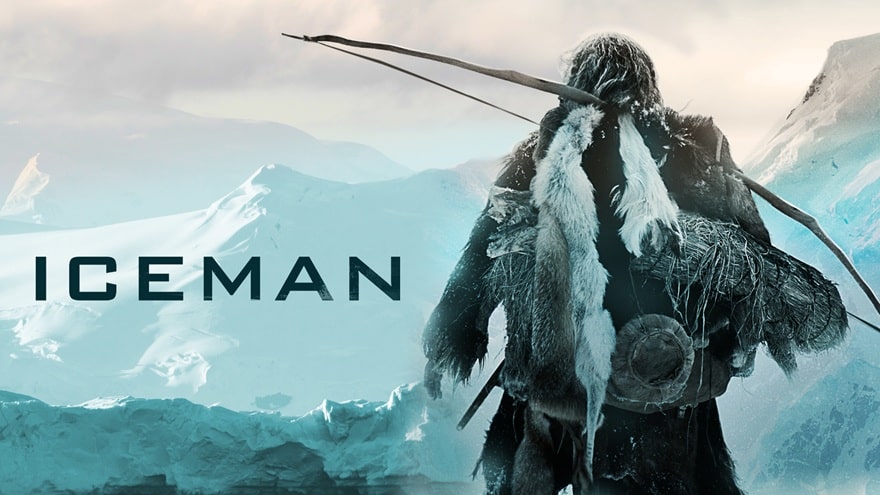 Iceman (Echo Film/Lucky Bird Pictures, 2017)
Iceman (2017) Tubi
Iceman (Echo Film/Lucky Bird Pictures, 2017)
Iceman (2017) Tubi
Based on a 5300-yr-old mummy found by hikers in 1991, this German production proceeds to tell the imagined last days of a Neanderthal man, Kaleb. It’s a simple revenge flick, told in the ancient Rhaetic language, and is beautifully shot through with a suitably grim palette.
Jürgen Vogel as Kaleb is brilliant, bringing physical and emotional heft to every scene, and it was a treat to see Franco Nero pop up. It’s solid, at times horrific, and a reminder that revenge is a dish best served hunted, skinned and roasted.
8/10
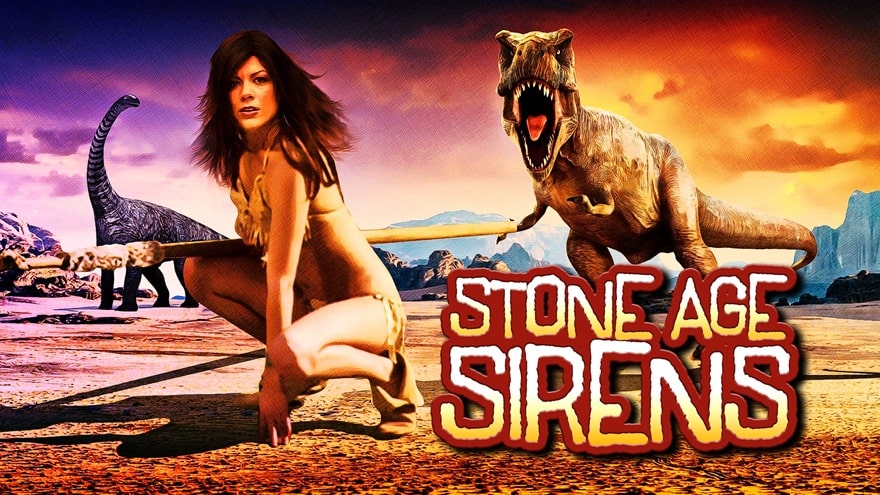 Stone Age Sirens (Retromedia Entertainment, November 16, 2004)
Stone Age Sirens (2004) Tubi
Stone Age Sirens (Retromedia Entertainment, November 16, 2004)
Stone Age Sirens (2004) Tubi
Another Fred Olen Ray flick (credited as Nicholas Medina, his soft-core pseudonym), this one is a heavily edited version of the film Teenage Cave Girl, heavily edited to the point where there’s no actual Neanderthal nookie on display at all. By cutting out all the sex scenes, what you are left with is a rubbish comedy about a pair of cave dwellers who are transported to the future and fall in with some randy archeologists (there’s more than you knew).
Peppered with stop-mo shots stolen from Planet of the Dinosaurs and some abominable CG in all its 8-bit glory, this is the usual slice of fried shite I’ve come to expect from the once great Ray. It gets a point for only being 46 minutes long.
1/10
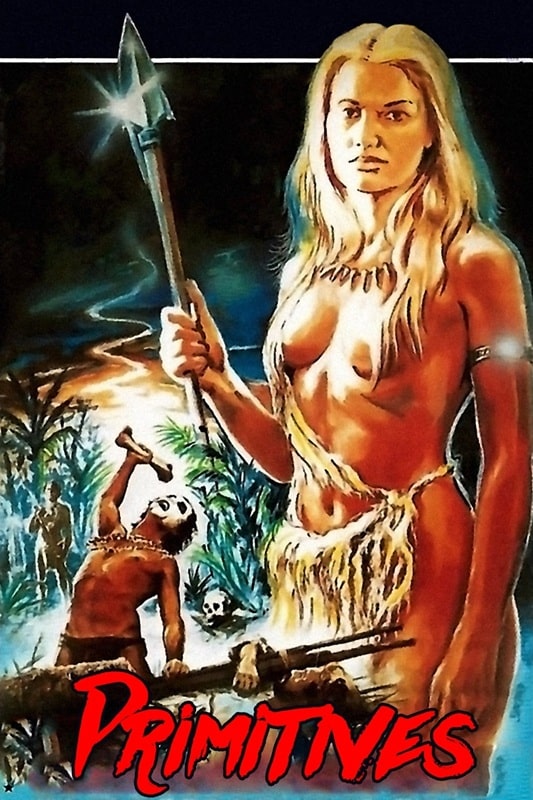
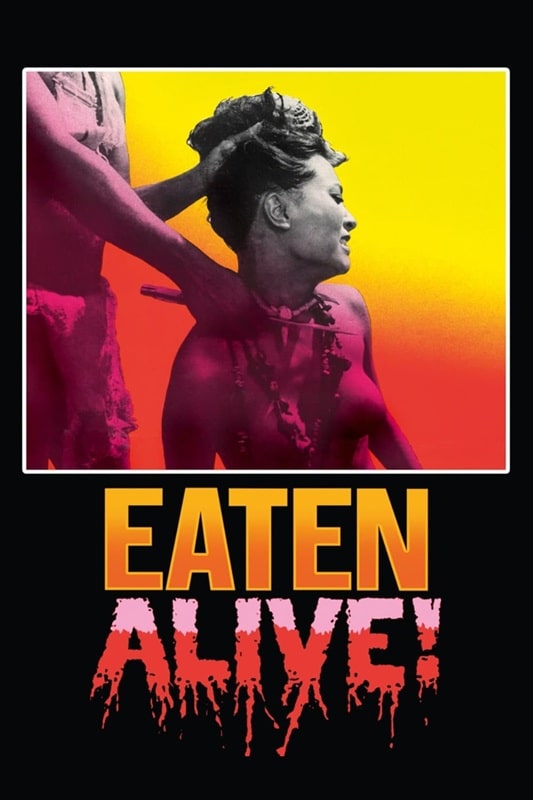
Primitives (Rapi Films, 1978) and Eaten Alive! (Dana Film, March 20, 1980)
This one is an Indonesian version of the Italian jungle exploitation flicks, and doesn’t just follow a similar plot, but lifts whole sequences directly for previous fare such as Cannibal Holocaust. In fact, it’s pretty shameless how much is ripped off from that movie, right down to locations and set pieces (although it stops short of actual tallywhacker removal). It’s full of the usual grunting and chomping, and the filmmakers seemed to double-down on the animal cruelty, using horrific footage from previous films.
It’s a miserable viewing experience, and I’m only giving it an extra mark for the shameless stealing of inappropriate music (Kraftwerk’s ‘The Robots, a trio of Jean Michel Jarre tracks and Princess Leia’s theme) and a hilarious rubber axe boomerang scene.
4/10
Eaten Alive! (1980) TubiNot to be confused with the Tobe Hooper ‘gator romp, this is another Italian cannibal flick that starts interestingly in New York, but then descends into the usual animal torture and misogyny associated with these films.
It’s held together by a flimsy ‘Jonestown’ plot, but this was the one that officially finished me off — I am totally done with this genre and never need to see another jungle cannibal film ever again. Hateful.
1/10
Previous Murkey Movie surveys from Neil Baker include:
There, Wolves
What a Croc
Prehistrionics
Jumping the Shark
Alien Overlords
Biggus Footus
I Like Big Bugs and I Cannot Lie
The Weird, Weird West
Warrior Women Watch-a-thon
Neil Baker’s last article for us was There, Wolves: Part III. Neil spends his days watching dodgy movies, most of them terrible, in the hope that you might be inspired to watch them too. He is often asked why he doesn’t watch ‘proper’ films, and he honestly doesn’t have a good answer. He is an author, illustrator, outdoor educator and owner of April Moon Books (AprilMoonBooks.com).
6 Books Begging To Be Held & The Advantages of Reading Them
In a society ruled by digital displays, it’s simple to overlook the pure pleasure and…
The post 6 Books Begging To Be Held & The Advantages of Reading Them appeared first on LitStack.
ROSE / HOUSE by Arkady Martine
Rules for Mega-Dungeon Adventuring: Dragonslayer by Greg Gillespie
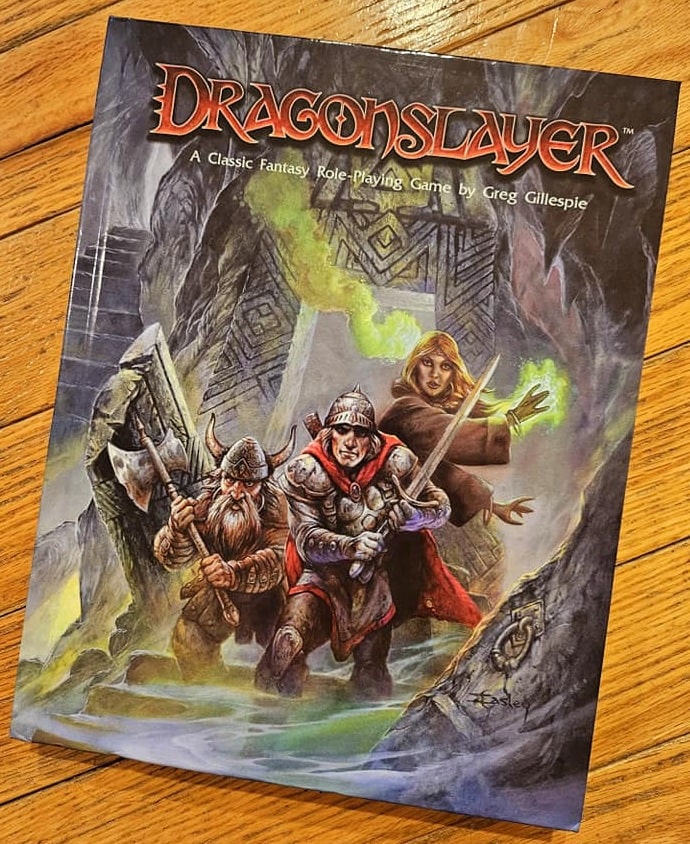
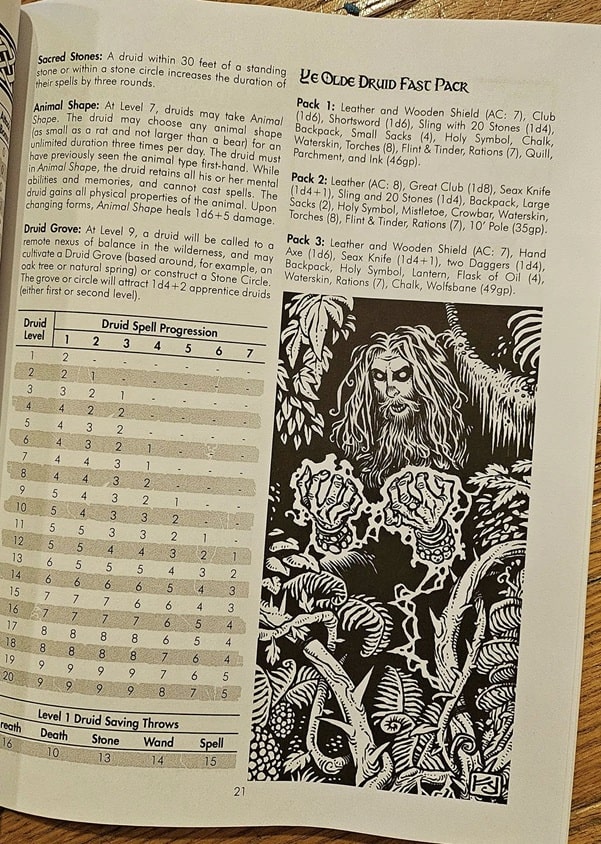
Dragonslayer (OSR Publishing, February 7, 2024). Cover by Jeff Easley
I’ve admired the mega-dungeon adventures of Greg Gillespie for several years, particularly Barrowmaze and The Forbidden Caverns of Archaia. Most recently, Greg published his own set of rules to go with those adventures. It’s called Dragonslayer, and I think it’s excellent. Here is the description from the back of the book:
Journey to a realm of myth and magic, where ancient legends and terrifying minsters come to life, and adventure awaits…
Inspired by the timeless role-playing tradition of the early 1980s, this ruleset seamlessly integrates the simplicity of B/X with the chrome if First Edition. The book has everything you need: classes, spells, monsters, and treasure, combined in a single volume.
For those who don’t know, “B/X” is the acronym for the Basic and Expert rules of Dungeons & Dragons.
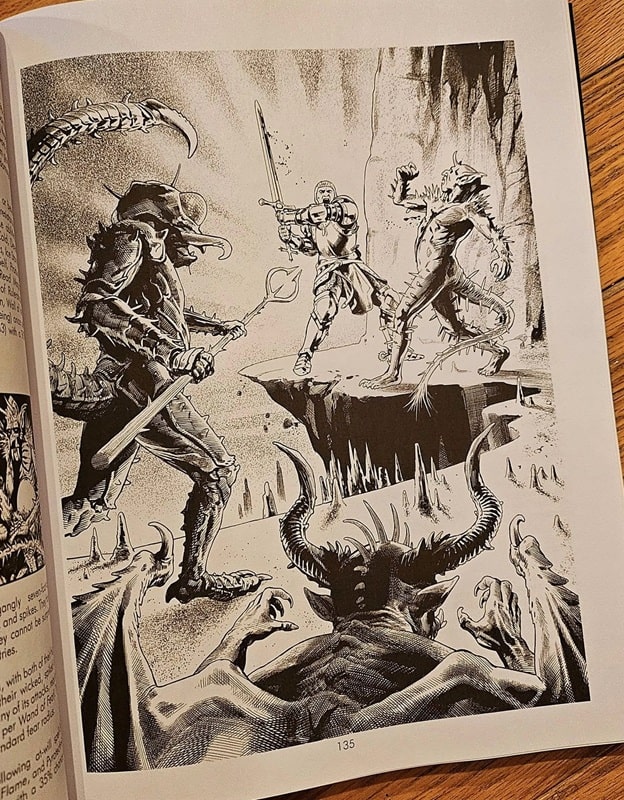
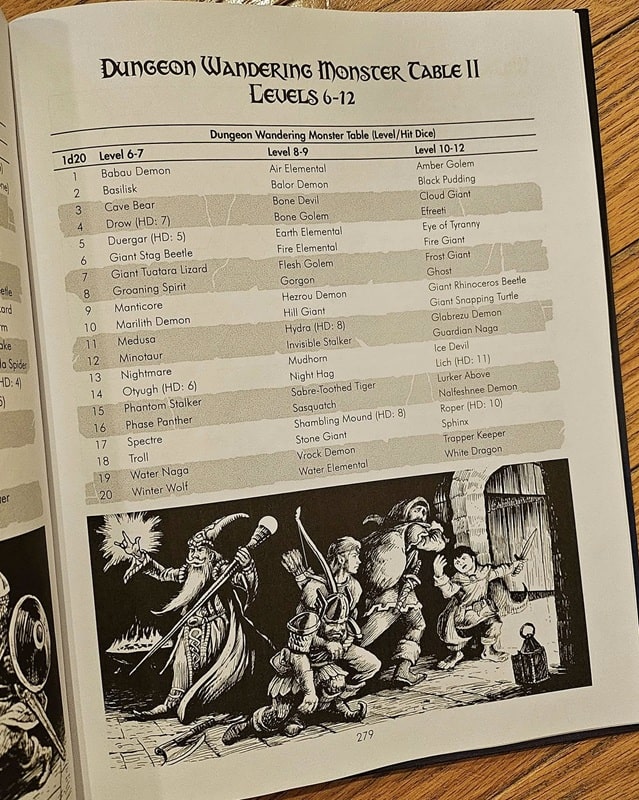
Interiors from Dragonslayer
The Basic and Expert rules were conceived by Tom Moldvay and Zeb Cook, who in turn derived their inspiration from the works of Gary Gygax and Dave Arneson — and also the previous Basic set (my personal favorite) compiled by John E. Holmes.
B/X is probably the most “cloned” version of D&D, yet Greg establishes his own flavor, quite admirably, within that framework. It’s nicely done!
Lastly, it’s really great to see art from the likes of Jeff Easley, Diesel LaForce, and Darlene Artist. All legends of the hobby whose work I have admired for decades.
Jeffrey P. Talanian’s last article for Black Gate was a review of Robert E. Howard’s “Worms of the Earth.” He is the creator and publisher of the Hyperborea sword-and-sorcery and weird science-fantasy RPG from North Wind Adventures. He was the co-author, with E. Gary Gygax, of the Castle Zagyg releases, including several Yggsburgh city supplements, Castle Zagyg: The East Mark Gazetteer, and Castle Zagyg: The Upper Works. Read Gabe Gybing’s interview with Jeffrey here, and follow his latest projects on Facebook and at www.hyperborea.tv.
What Moves the Dead - Book Review (reread/repost)

What Moves the Dead (Sworn Soldier #1)by T. Kingfisher
What is it about:From the award-winning author of The Twisted Ones comes a gripping and atmospheric retelling of Edgar Allan Poe's classic "The Fall of the House of Usher."
When Alex Easton, a retired soldier, receives word that their childhood friend Madeline Usher is dying, they race to the ancestral home of the Ushers in the remote countryside of Ruritania.
What they find there is a nightmare of fungal growths and possessed wildlife, surrounding a dark, pulsing lake. Madeline sleepwalks and speaks in strange voices at night, and her brother Roderick is consumed with a mysterious malady of the nerves.
Aided by a redoubtable British mycologist and a baffled American doctor, Alex must unravel the secret of the House of Usher before it consumes them all.
What did I think of it:I totally pre-ordered this book because it sounded cool and I couldn't resist that cover! (The end-papers have a really cool illustration as well.)
And this is indeed a really cool read!
It's a retelling of Edgar Allan Poe's "The Fall of the House of Usher." , but you can definitely read it without having read Poe's original. It's atmospheric, disturbing, and delightfully creepy.
I loved Alex, they're a great hero: down to earth, pragmatic, but also caring towards their friends. And their narration brings some humor to an otherwise creepy tale. Having read a lot of Poe's works, the plot wasn't unfamiliar, but the way Kingfisher gave it life and brought new things to it made that I was invested from the start.
A warning to those who might have read other books by Kingfisher (A Wizard’s Guide to Defensive Baking or Paladin's Grace for example): Kingfisher is a pen name used by Ursula Vernon for anything that doesn't fit the Ursula Vernon name, so this book is very different than some of the other books written under the Kingfisher name.
You bet i'll be trying to find more creepy, atmospheric beauty among the Kingfisher books though!
Why should you read it:It's a delightfully atmospheric read.
Thoughts on rereading:Yup: Still just as beautifully atmospheric as the first time. A total keeper. Now on to read the next one.
Book review: Castaways (The Castaways #1) by Craig Schaefer

Book links: Amazon, Goodreads
ABOUT THE AUTHOR:
Publisher: Length: Formats:
Dark academia by Craig Schaefer? Yes, please. Especially the kind that leans hard into the dark. Castaways delivers good story, some eldritch horror vibe, and strong coming-of-age arcs.
Amy Nettle is a classic down-on-her-luck protagonist. She’s stuck in a dead-end life with limited way out. And when things go really south, the mysterious black envelope arrives. Suddenly, she’s whisked away to Saunders Academy, a magical school on a storm-tossed island surrounded by carnivorous mermaids, towering leviathans, and an ever-present sense that something is very wrong.
And if you flunk out? You get sent back to your old life without your magic, your memories, or even the promise of escape. And no one here wants to go back.
I’m a huge fan of Schaefer simple and concise writing. And characters. Amy and her new friends are coming of age in the middle of a mystery that keeps getting bigger and more terrifying. There are hints that this school - and whatever forces control it - are tied to the broader Daniel Faust/Harmony Black universe, and that may suggest an even larger conflict on the horizon.
For fans of Schaefer - it’s not as dark as other series, but it does get dark here and there.
Magic school has never felt this dangerous, and I loved every second of it. Now, where’s the sequel?
We No Longer Need Aliens to Feel Alienated: State of Paradise by Laura Van Den Berg
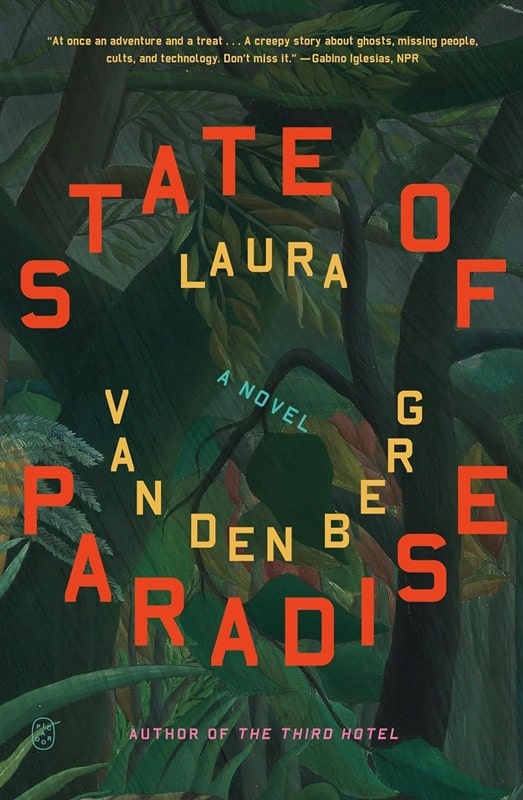
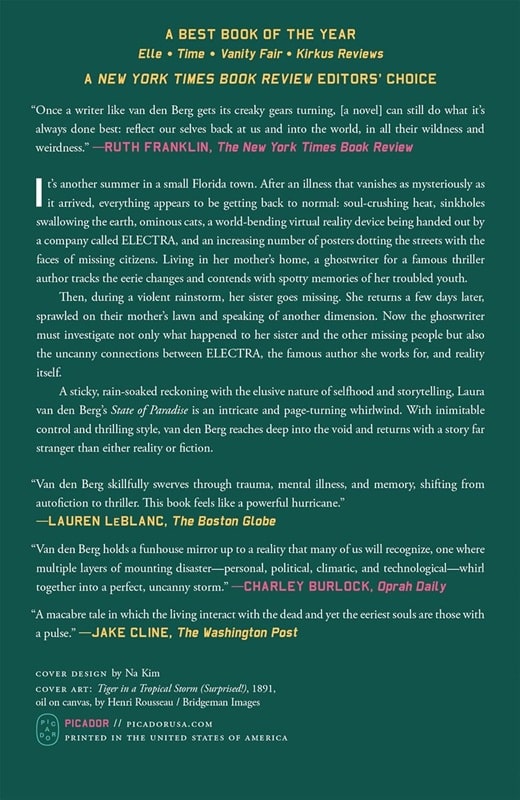
State of Paradise (Picador paperback reprint, July 8, 2025). Cover art:
detail from Tiger in a Tropical Storm by Henri Rousseau, 1891
When I was a kid there was a public service announcement on TV that went something like “Attention: Aliens. You are required by law to report by January 31st.” This was because of the Alien Act of 1940, otherwise known as the Smith Act. Basically, the legislation made it illegal to advocate the violent overthrow of the U.S. government and provided for a tracking system of non-citizens who, in the context of Nazi occupation of Eastern Europe and its then alliance with the Soviet Union, were potential suspects of espionage and sabotage. (Fun fact: prosecutions for advocating overthrow of the government have been ruled as unconstitutional violations of the First Amendment, in case you were wondering how any nitwit on social media can mouth off about doing just that.)
But as I didn’t know anything about this, the announcement always conjured an image of big headed, bug-eyed tentacled Martians registering at the local post office. Which I thought pretty funny. One thing I’ve learned over the years, and particularly these days, is that much of what adults say in all seriousness is often funny, but not in a “ha ha” way. More in a Jean Paul Sartre absurdist kind of way.
Needless to say, alien life forms are foundational science fiction, horror, and fantasy tropes. While some genre writers and filmmakers may very well have thought it just might be cool to tell stories about monsters from other worlds, the notion of aliens amongst us primarily serve as metaphors for, among other things, Communists and related usurpers of “normal” socio-political mores, fears of nuclear holocaust, technology run amok, repressed sexual desire, climate change, disease, and disembodiment.
Probably to a large extent due to the COVID-19 pandemic as well as severe climate events such as the California wildfires, today’s alienation storyline is less “aliens amongst us” and more “us alienated from the world.”
Which brings us to State of Paradise by Laura Van Den Berg.
The title is ironic, referring not only to Florida and its reputation as a refuge for the aged retired, the sunburned, and the weird, but that if the existential human condition is sometimes characterized using the Biblical metaphor of banishment from Eden, we currently find ourselves further away from Paradise than ever before.
In Florida, my husband runs. Ten miles a day seventy miles a week. a physical feat that is astonishing to me. He started running after he got stuck on a book he is trying to write, a historical account of pilgrims in medieval Europe. Back then it was not unusual for pilgrims to traverse hundreds of miles on foot… My husband is a trained historian and fascinated by journeys. He wants to understand what has become the pilgrimages in our broken modern world.
The first person narrator is
…a writer, though not a real one, I ghost for a very famous thriller writer. When I first got the job, I spent a month reading books by the famous author, to better understand the task that lay before me… the phrase everything is not as it seems appeared in nearly all the book descriptions.
Indeed, everything is not as it seems as the narrator (a kind of ghost herself) proceeds on a pilgrimage not only through actually weird Florida, where the 1930s Tarzan movies were filmed and non-native Pythons abound alongside Everglades alligators and Disney characters, but an alternate reality to which her sister and others somehow travel. Along the way are treated to torrential rain and flooding, sinkholes, virtual reality headsets, cults, and cats. And voluntary human extinction meetings. Just another day in Paradise.
With a history of being institutionalized, our narrator may be unreliable, and as a writer she is in the business of making things up. Not much cause for cognitive dissonance given the made-up unreliable narratives of our daily news cycle.
The plot, such that it is, concerns finding out what happened to her sister and others during their disappearances. And along the way what is happening to the narrator as she tries to figure out an increasingly strange world that nonetheless comes to define everyday existence. And whether she can trust what she is experiencing and what she remembers of those experiences.
Sometimes I wonder what we are supposed to do with our memories. Sometimes i wonder what our memories are for. A latch slips and the past floods in, knocking us flat. We leave places and we don’t leave places. Sometimes I imagine different versions of myself in all the different places I have ever lived, inching time in parallel.
This is a novel about the proverbial frog in boiling water, how because as the temperature only gradually rises, we don’t realize we’re being cooked. One absurdity follows another, and it is just how things are. We are now the aliens, journeying towards some unsettling destination, and we don’t have to bother to report.
One of the weirdest things about this period of time is the parts that still seem normal. Mundane and non-apocalyptical. Like how one minute we need an inflatable raft to cross the street and another we’re eating pasta at my sister’s house.
Or as Alice Cooper put it, “Welcome to my nightmare.”
David Soyka is one of the founding bloggers at Black Gate. He’s written over 200 articles for us since 2008. His most recent was a review of Polostan by Neal Stephenson.
Spotlight on “The Mysterious Bakery on Rue de Paris” by Evie Woods
Nestled among the cobblestone streets of Compiègne, there existed a bakery unlike any other. The…
The post Spotlight on “The Mysterious Bakery on Rue de Paris” by Evie Woods appeared first on LitStack.
On McPig's Radar - They Bloom at Night
 They Bloom at Nightby Trang Thanh Tran
They Bloom at Nightby Trang Thanh TranA red algae bloom has taken over Mercy, Louisiana. Ever since a devastating hurricane, mutated wildlife lurks in the water that rises by the day. But Mercy has always been a place where monsters walk in plain sight. Especially at its heart: The Cove, where Noon’s life was upended long before the storm at a party her older boyfriend insisted on.
Now, Noon is stuck navigating the submerged town with her mom, who believes their dead family has reincarnated as sea creatures. Alone with the pain of what happened that night at the cove, Noon buries the truth: she is not the right shape.
When Mercy’s predatory leader demands Noon and her mom capture the creature drowning residents, she reluctantly finds an ally in his deadly hunter of a daughter and friends old and new. As the next storm approaches, Noon must confront the past and decide if it’s time to answer the monster itching at her skin.
Of Men, Monsters, and Little People
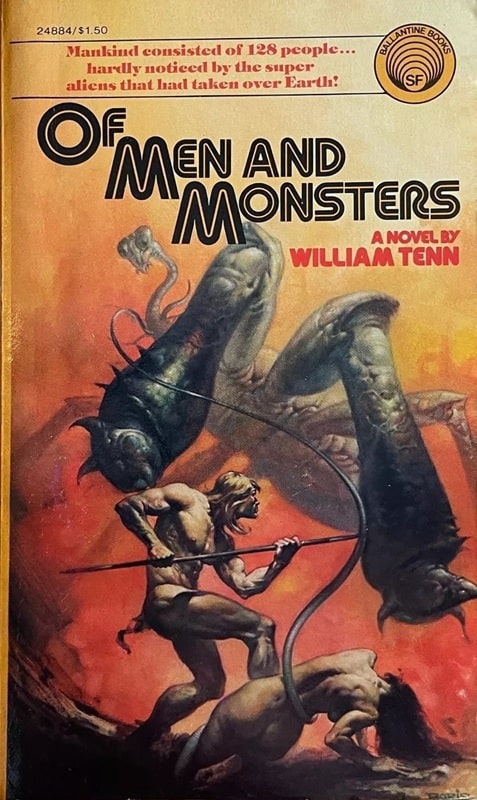
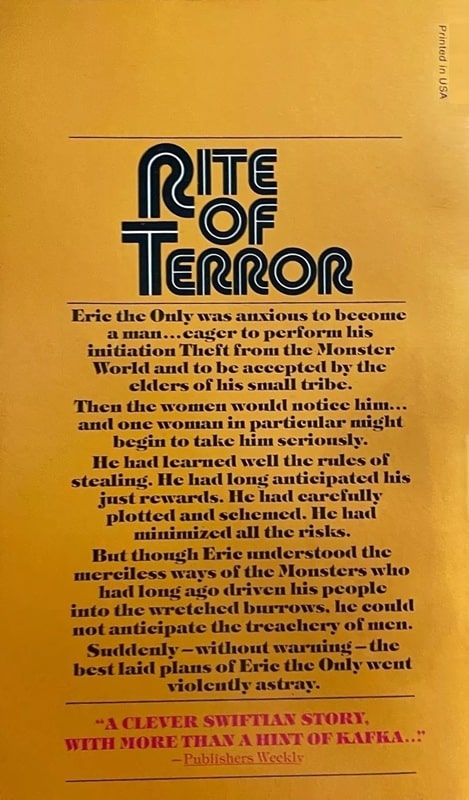
Of Men and Monsters, by William Tenn
(Ballantine Books, December 1975). Cover by Boris Vallejo
After posting about The Borrowers by British author Mary Norton (1903 -1992) last week, several people mentioned other books and movies with similar kinds of themes — little people living in the houses of big people. I thought I might take another post to discuss a few other examples from my own book collection.
First up is series by American author John Peterson (1924 – 2002). The first one was just called The Littles and was published in 1967, 15 years after The Borrowers (1952). The Littles live much like the “borrowers. They look human except for having tails. (In films they apparently look very mouselike but that’s not the case in the books.)
[Click the images for less little versions.]
 The Littles, by John Peterson (Scholastic Books, 1991-1993 editions). Covers by Jacqueline Rogers.
The Littles, by John Peterson (Scholastic Books, 1991-1993 editions). Covers by Jacqueline Rogers.
Unlike with The Borrowers, I never heard of The Littles until I was buying books for my own son, (Josh), even though many were written when I was a kid. I stopped by Josh’s school to pick him up one day and they were having the Scholastic Book fair.
When I was a kid, we never had a fair where you could actually see the books, but we did get the order forms and I bought quite a few books through them for 25 cents or so when in grade school. I had to stop by this one at my son’s school and found out about The Littles. I bought every one they had, ostensibly for my son but at least halfway for myself. I read them all, too, although I don’t think Josh read them all.
There are a bunch of these books and more were written after Peterson’s death, but here are the ones I have. All covers are by Jacqueline Rogers, with charming interior illustrations by Roberta Carter Clark. (These are written specifically for children and I don’t think the stories are as good as in The Borrowers series, but they are fun.)
The Littles, 1967
The Littles have a Wedding, 1971
The Littles and the Trash Tinies, 1977
The Littles Go Exploring, 1978
The Littles and the Lost Children, 1991
The Littles and the Terrible Tiny Kid, 1993
In my twenties I came upon another series about tiny people. This was a trilogy by Gordon Williams (1934 – 2017) that included The Micronauts (1977), The Microcolony (1979), and Revolt of the Micronauts (1981) — all from Bantam Books.
 The Micronauts by Gordon Williams (Bantam Books, August 1977, May 1979, and August 1981). Covers by Boris Vallejo, Lou Feck, and Peter Goodfellow
The Micronauts by Gordon Williams (Bantam Books, August 1977, May 1979, and August 1981). Covers by Boris Vallejo, Lou Feck, and Peter Goodfellow
These are SF novels, not to be confused with the toy series and comic book series from Marvel with the same name — which I’d never heard of until I started looking into stuff for this post. The difference here is normal sized people are cloned at 1/8th their natural size in order to deal with a catastrophic future where most natural resources have been exhausted. The experiment is set up in a controlled environment but things soon get out of control.
I liked all three very much and they had some cool covers. The Micronauts has a Boris Vallejo cover and interior illustrations. The Microcolony has a wonderful Lou Feck cover that I love. Revolt has a Peter Goodfellow cover.
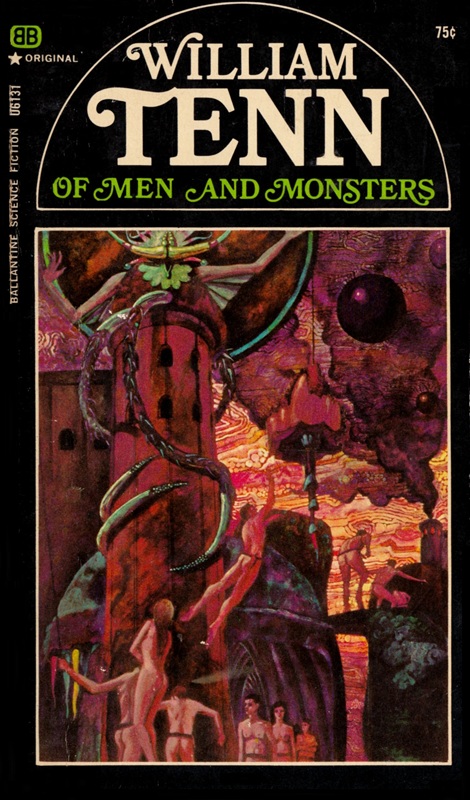
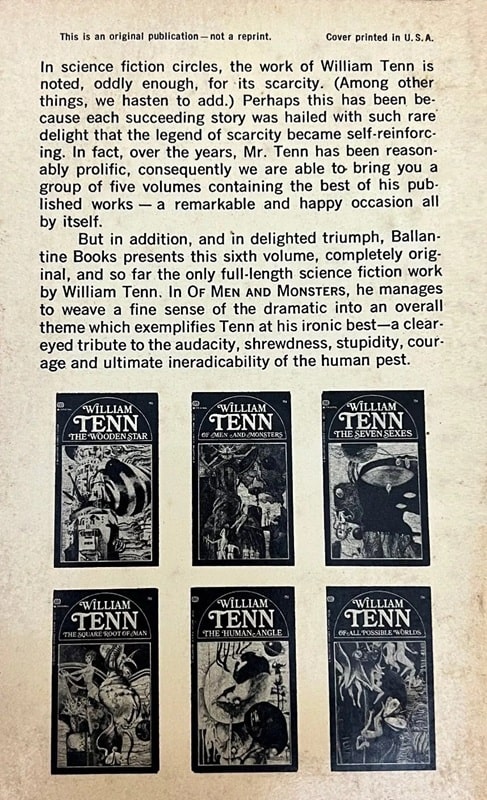
Of Men and Monsters, by William Tenn
(Ballantine Books, June 1968). Cover by Stephen Miller
The last book I’ll review today is one of the first adult SF novels I ever read, Of Men and Monsters, by William Tenn (1920 – 2010). It’s still a fond memory. Tenn was the pseudonym for a British born author named Phillip Klass, although he moved to the US before he was 2. The book was published in 1968 and I read it in a library edition, but years later I bought a Del Rey printing with a great cover by Boris Vallejo (see top).
This one has its own twist on the theme. The people are normal sized, but they are survivors of an invasion by gigantic aliens so huge that the humans can live like mice in their walls. I just loved it, and found out from Adam Tuchman on Facebook that it was originally published in a shorter version in the October 1963 issue of Galaxy, called “The Men in the Walls.”
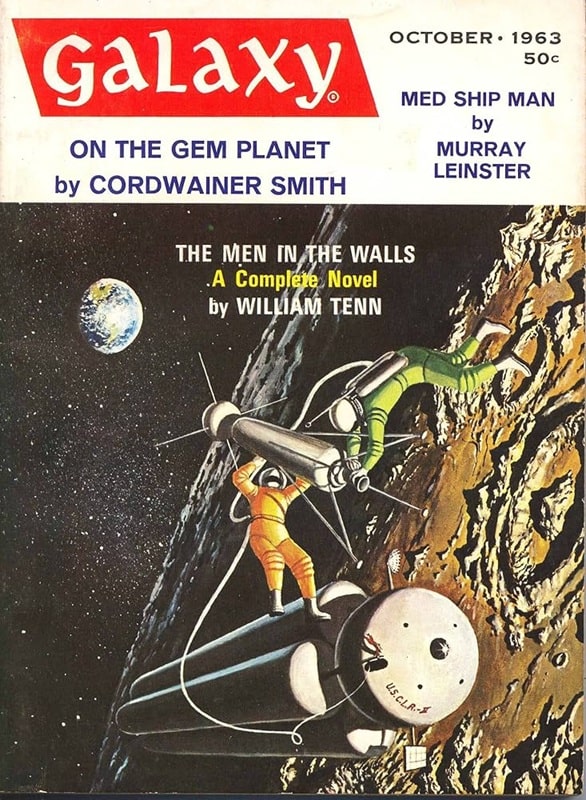
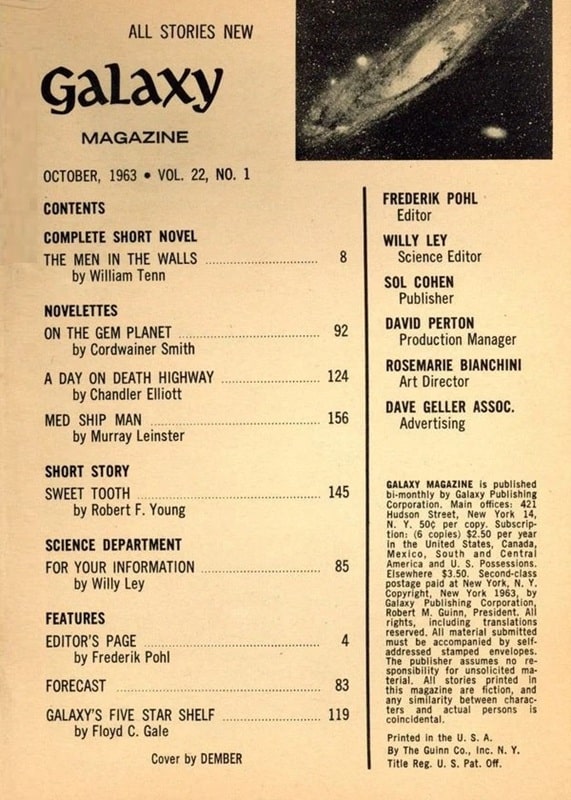
Galaxy, October 1963, containing “The Men in the Walls,” plus stories
by Cordwainer Smith, Murray Leinster, and more. Cover by McKenna
I’ll note that the ending Of Men and Monsters takes us into Sword & Planet territory.
There are plenty more I could talk about here, such as Lindsay Gutteridge’s Cold War in a Country Garden Trilogy, and Ben Sheppard reminded me of an awesome story called “Surface Tension” by James Blish, which deals with the miniaturization theme. There’s Asimov’s Fantastic Voyage, and even the movie Honey, I Shrunk the Kids, but this post is getting long as it is.
Charles Gramlich administers The Swords & Planet League group on Facebook, where this post first appeared. His last article for Black Gate was And Now For Something Completely Different: The Borrowers, by Mary Norton.
7 Author Shoutouts | Authors We Love To Recommend
Here are 7 Author Shoutouts for this week. Find your favorite author or discover an…
The post 7 Author Shoutouts | Authors We Love To Recommend appeared first on LitStack.
The Naturalist Society - Book Review
 The Naturalist Society (The Naturalist Society #1)by Carrie Vaughn
The Naturalist Society (The Naturalist Society #1)by Carrie VaughnWhat is it about:In this magical tale of self-discovery from New York Times bestselling author Carrie Vaughn, a young widow taps into the power that will change the world—if the man’s world she lives in doesn’t destroy her and her newfound friends first.
In the summer of 1880, the death of Beth Stanley’s husband puts her life’s work in jeopardy. The magic of Arcane Taxonomy dictates that every natural thing in the world, from weather to animals, can be labeled, and doing so grants the practitioner some of that subject’s unique power. But only men are permitted to train in this philosophy. Losing her husband means that Beth loses the name they put on her work—and any influence she might have wielded.
Brandon West and Anton Torrance are campaigning for their expedition to the South Pole, a mission that some believe could make a taxonomist all-powerful by tapping into the earth’s magnetic forces. Their late friend Harry Stanley’s knowledge and connections would have been instrumental, but when they attempt to take custody of his work, they find that it was never his at all.
Tied together by this secret and its implications, Beth, Bran, and Anton must find a way for Beth to use her talent for the good of the world, before she’s discovered by those who would lay claim to her rare potential—and her very freedom.
What did I think of it:I got this book as a present from Jeffe, and it's a signed copy as well!I have read books by Vaughn before - Kitty Norville, Martians Abroad - and I really enjoyed those. But I can't say Vaughn was on my watch list. I can tell you that this book changed that!
In this alternate history there's a sort of magic - taxonomy - where if you name something, and know it, you can use the magic/power of that thing or animal. I loved learning more of this magic and how the characters used it in different ways.
As for the characters: I loved Beth from the start. She's smart, knows more about birds than a lot of experts, and managed to teach herself taxonomy, but because she is a woman she is barred from the spaces where she could do something with her knowledge. She managed to get some of her work out there under her husband's name, who (all other stuff he did aside) at least encouraged her work. But when he dies, Beth is back at square one.
Enter Bran and Anton, who were friends with Beth's husband and want to use his work for their own goals.
I really loved Anton as well. He's pragmatic, charismatic, and keeps going to get things done. Bran... still needed to grow up a bit, despite being old enough he should have already. Still I liked him well enough.
I was totally invested in Beth freeing herself from the chains forged by society and find her way. When she befriends Bran and Anton, I rooted for the three of them to realize their dreams. Bran and Anton have a rival, who soon becomes a danger to Beth as well, making me anxious to see them get out of everything alive and successful.
I can safely say I loved everything about this book, even when it made me cry. I can't believe I hadn't seen it mentioned before and only discovered it when I got it as a present. Is it for everyone? I can see how people think it's too dry, there's lots of talk about the science of taxonomy, and there's bits about famous taxonomists at the end of most chapters, but I loved these parts of the book as well (yup: Nerdy Factoids McPig, and proud to be).
You bet I'll be on the lookout for the next book in this world.
Why should you read it:It's a wonderful Alternate History Read.
Book Review: The Buffalo Hunter Hunter by Stephen Graham Jones
I received a review copy from the publisher. This does not affect the contents of my review and all opinions are my own.
 The Buffalo Hunter Hunter by Stephen Graham Jones
The Buffalo Hunter Hunter by Stephen Graham Jones
Mogsy’s Rating: 4.5 of 5 stars
Genre: Horror
Series: Stand Alone
Publisher: Saga Press (March 18, 2025)
Length: 448 pages
Author Information: Website
At its heart, The Buffalo Hunter Hunter may be a vampire novel, but it’s about so much more that calling it such would be doing it a great disservice. Yes, the story involves undead, blood-drinking creatures. However, it is also a meditation on the scars of history, and, like any good western, features a tale of vengeance. In short, Stephen Graham Jones has created something far more complex than your typical vampire horror here.
The novel opens in 2012 with an introduction to Etsy Beaucarne, a junior professor at the University of Wyoming who is desperately looking for a way to revitalize her career. Her opportunity arrives when she comes into possession of a long-lost journal belonging to her great-great-grandfather, a Lutheran priest who lived in the American West in the early 1900s. Within its pages, Arthur Beaucarne had transcribed a stunning confession from a Blackfeet man named Good Stab who claimed to be an immortal vampire.
Through Good Stab’s recorded testimony, readers are plunged even farther back in time to the brutal winter of 1870, when US Army soldiers carried out the Marias Massacre that left hundreds of his people dead. Good Stab, one of the few survivors, swore that he would get his revenge, spending the next few decades hunting down those responsible. Yet his survival came at a heavy price. After losing his family, his home, and even his place in the world, Good Stab’s path changes his life forever. Possessed of both immense power and an insatiable hunger, he knows what happened to him is a curse—but it’s also one he can wield as a weapon against those who destroyed everything he once knew.
From the start, The Buffalo Hunter Hunter’s frame structure brings to mind Dracula, which is not the only nod to the classic. Stephen Graham Jones continues his homage with the epistolary style format, enhancing the story’s eerie, almost folktales-y like atmosphere. Despite its supernatural elements though, some of the most disturbing aspects of the novel are the parts rooted in reality—particularly the history of Indigenous genocide and the annihilation of the buffalo.
In Good Stab’s account, he wasn’t merely seeking revenge for the slaughter of his people, but also for the destruction of his whole way of life. His vampirism not only holds him forever in a state of constant hunger but also traps him in an endless cycle of rage and grief. Immortality offers him no peace but instead forces him to witness more loss as the years stretch on. This makes Good Stab one of the most interesting and tragic characters I’ve ever encountered. He isn’t a hero or a villain—just a man and then a creature driven by circumstance.
Like most vampire stories, The Buffalo Hunter Hunter is unsurprisingly violent and gory. That said, its horror manifests itself in lowkey, slow-burn ways as well. The author’s prose captures the harshness of the frontier, an unforgiving landscape where you are constantly struggling to survive. Though the pacing may be demanding at times, this story simply must be experienced on its own terms, requiring your full attention. With its mix of so many elements from history, mythology, and horror, this is not a book to be rushed but to be absorbed slowly, allowing its haunting themes to fully take hold.
If I had any criticisms at all, it would be that some parts of the story become repetitive at times, especially with regards to the interactions between Arthur and Good Stab. While this back and forth served to reinforce the narrative style, I think the novel could have packed the same emotion punch without being quite so long, and some streamlining would have been beneficial.
In the end, I absolutely loved The Buffalo Hunter Hunter, as in, it just might be my favorite book by the author yet. While it’s not the easiest read, the end results are satisfying and rewarding. Stephen Graham Jones’ storytelling skills are on full display here, and it would make me very happy to see him tackle more historical horror like this sin the future. Granted, I haven’t enjoyed everything he’s written, but when he’s good, he very good. And with this novel, he’s proven once again why he is one of the most important voices in the genre today. If you enjoy horror with depth, especially one exploring a dark chapter of American history, this is a must read.
![]()
![]()

Recent comments